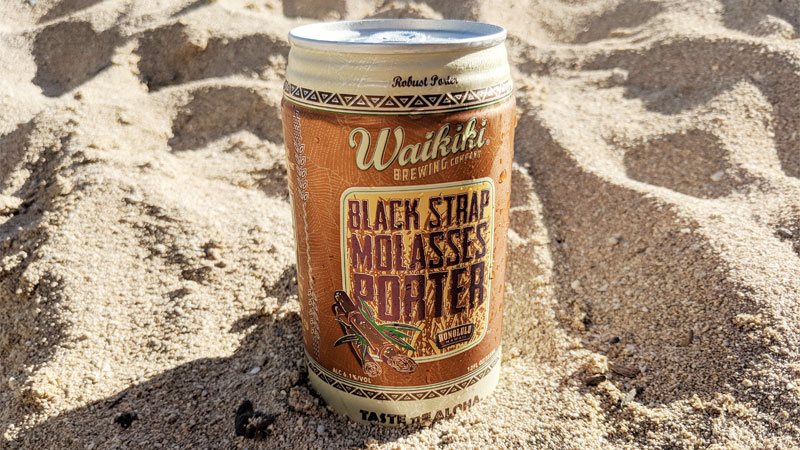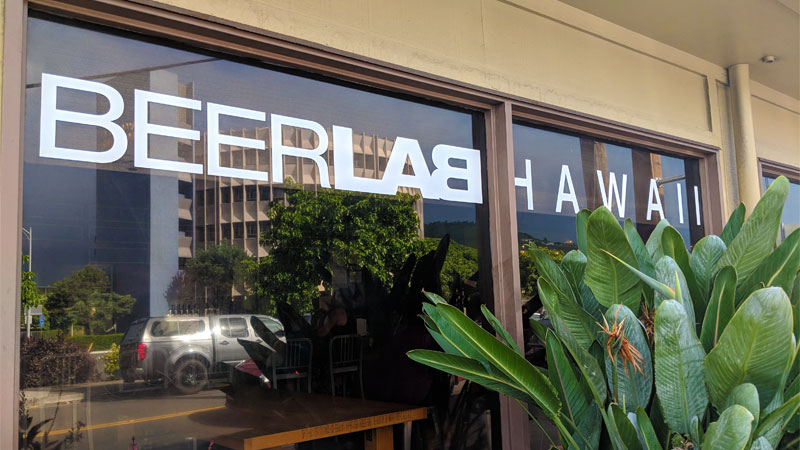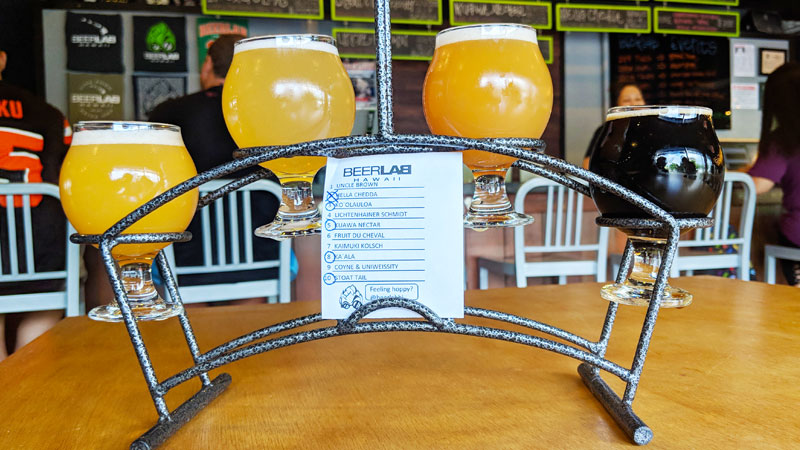In 2017, over 9 million tourists visited Hawaii by air or cruise ship, spending over $16 billion dollars, according to the Hawaii Tourism Authority. If any of those 9 million folks of drinking age wanted to sip a local beer on the beach or their hotel balcony as the sun set, they could choose from… just 17 breweries.
And what if those tourists in Hawaiian shirts and uneven tans absolutely loved the beer they had on Oahu, Maui, or the Big Island? What if they wanted to buy Hawaii-made beer when they got home?
Odds are they couldn’t.
The reasons people can’t buy much of the beer brewed in Hawaii without actually being there are varied, but a big factor is not much beer is brewed in the state to begin with. “The beer market in Hawaii is still pretty young,” says Sharon Heitzenroder, sales director of Honolulu Beerworks. “We’re the oldest operating brewery on Oahu, and we’re only 5 years old.” The majority of smaller breweries are operating on a seven- or 10-barrel system, Heitzenroder says, and likely feel they have to saturate the market locally before branching out.
Hawaiian breweries with beer found stateside are the exception, not the rule. Maui Brewing Co. is currently the only brewery that produces all its beer in-state and ships it to the mainland. It has the advantage of size (it’s the largest craft brewer in the state) and 10-plus years in the business.
Kona Brewing Co. is owned by the Craft Beer Alliance, in which Anheuser-Busch InBev has a minority stake, and, while it produces beer in-state for Hawaiian consumption, Kona bottles and cans found on the mainland are made in the contiguous U.S.

“Location, location, location” is of utmost importance to any small Hawaiian brewery looking to ship its beer beyond state lines. Whereas mainland breweries have the ability to self-distribute beer as long as there’s gas in the truck, it’s a little more difficult for a Hawaiian brewery. “There’s a layer of planning you have to do when you’re a brewery in Hawaii that you don’t have to worry about as much when you’re on the mainland, and that tends to be, operationally speaking, when your beer is in transit,” says Heitzenroder.
That beautiful Pacific Ocean that provides the stunning backdrop for many a Hawaiian vacation photo is also a bit of a headache when an Oahu-based brewery like Honolulu Beerworks’ brews need to get over to Maui. “When we first opened [five years ago], you wouldn’t even distribute off of your island,” she says.
Honolulu Beerworks currently works with a distributor to get its beers on refrigerated cargo containers that are shipped to Kauai and Maui, where she estimates about 20 percent of sales come from. Those shipping costs are not inconsequential, but they pale in comparison to the new costs that would be incurred should beers like their toasted coconut-packed Cocoweizen be delivered to the mainland.
“The biggest fee that increases your cost is shipping,” Heitzenroder says. “You have to get the beer to port, get it in a refrigerated cargo container, pay for the container, pay for the freight fee to get it shipped overseas, and then pay for another docking fee to get it to another port.” But wait, there’s more! “Then you pay another transfer fee to get it onto another truck, and then back to another distributor warehouse. It’s crazy, and not a cheap endeavor to say the least,” she says.

“Not a cheap endeavor” is a phrase that can apply to the entire Hawaiian brewing process, whether it’s producing the beer or shipping it. “The cost of doing business in such a remote place is a challenge,” says Joe Peay Lorenzen, founding brewmaster at Waikiki Brewing Co. It’s possible to grow everything from pineapple to taro on the islands, but good luck harvesting beer’s building blocks like hops and barley. “It’s around $100 plus or minus to ship a pallet of grain or any other raw materials from one spot on the mainland to another. On a good day, I’m paying $550 to 600 to get that same pallet to Hawaii.”
Finding warehouse space to manufacture and store the beer is another issue. “Even your most basic warehouse on the outskirts of town is going to be a lot more per square foot than you’d expect to pay somewhere on the mainland,” he says. “That does become a challenge if you’re trying to scale up and produce that volume of beer to get it out of Hawaii.”
The agricultural industry has slowed over the years in Hawaii, with pineapple and sugarcane factories closing down. But the tropical bounty that the country’s arable land is still able to produce continues to inspire brewers. Recently, the state’s brewers guild hosted an event where 13 breweries featured beers made with local ingredients.
“There was a brown ale with taro in it, and IPAs with locally grown citrus fruit,” says Lorenzen. “Macnuts, locally [grown] coffee, and honey are also very popular [for brewing].” One standout brew came from Lanikai Brewing, Lorenzen says; brewmaster/founder Steve Haumschild brewed a beer with wild yeast found near his home on the Big Island, and local Hawaiian mango.

Both Heitzenroder and Lorenzen say that, despite the continued growth of their respective breweries, they have a ways to go before they achieve saturation in the Hawaiian market. And yet, both see an opportunity for more Hawaiian beer to make it to the mainland.
“I’m constantly getting emails asking when I’m going to be on the mainland,” Lorenzen says. “Well, for now we’re just out here on Hawaii. You’re going to have to plan another trip and visit us.”
